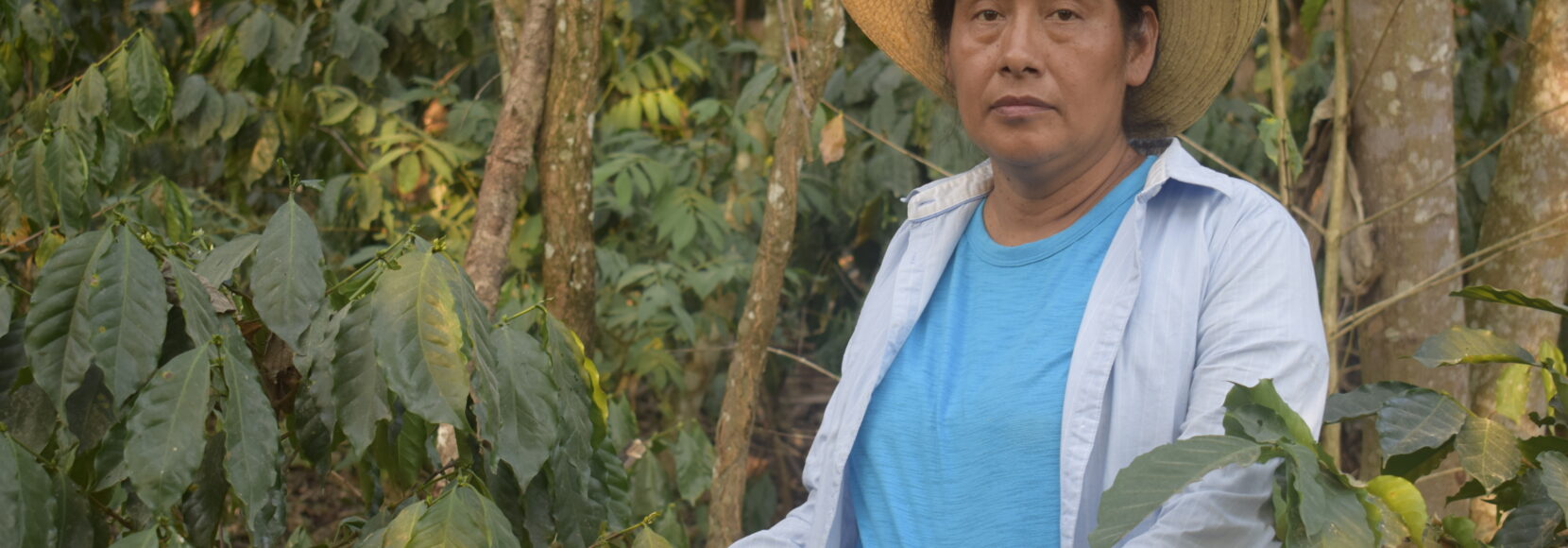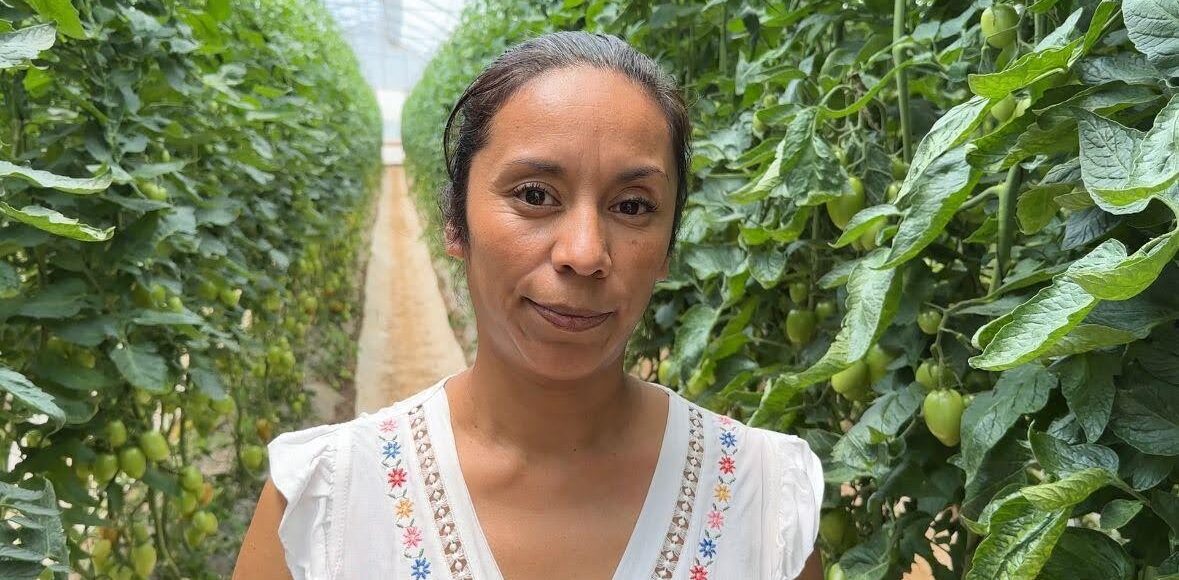
Building Farmers’ Resilience to the Fertilizer Crisis in Peru
There is a clear need to help farmers adopt alternatives, not just in the face of the fertilizer crisis, but in the longer term as well. Read more from Agrilinks.
Editors Note: This article is originally from Agrilinks.
When a coffee farmer, Wilder Tucto Aguirre, helped plant a vegetable garden near his home in the Peruvian hamlet of César Vallejo, he had no idea that a conflict halfway around the world would one day give it special importance.
Wilder and some of his neighbors had launched a microenterprise producing biofertilizers, and they started the garden to show potential customers in the surrounding communities that the organic product worked. “We’re harvesting cucumbers, napa cabbage and even tomatoes — it’s producing good results,” he said.
Good results are what farmers around the world are hoping for as they scramble to find alternatives to synthetic fertilizers that have become scarce. Ongoing supply chain challenges related to the COVID-19 pandemic have been exacerbated by the conflict in Ukraine, which has made it impossible for many farmers to purchase the fertilizers they are used to using. The community of César Vallejo — in a fertile transition zone between the Andes and Amazon rainforest where farmers cultivate coffee, cocoa, beans, maize and other crops — is no different.
Peru imports nearly all of the synthetic fertilizers used by its farmers, and 70% comes from Russia alone. In the first four months of 2022, the country’s urea imports fell 84% relative to the totals over the same period last year, threatening the production of both cash crops and dietary staples. Clímaco Cárdenas, president of the National Convention for Peruvian Agriculture, said that when fertilizer is available to Peru’s farmers, the price is more than four times higher than normal, and he forecasted that the production of food crops could fall by 40% due to insufficient fertilizer use.
Farming typically requires some kind of fertilization in order to support crop yields and quality. However, in the face of these supply disruptions, as well as growing recognition of the environmental costs of overdependence on — and overuse of — synthetic fertilizer, there is a clear need to help farmers adopt alternatives, not just in the face of the crisis, but in the longer term as well.
The experience of Wilder and thousands of other participants in the Coffee Alliance for Excellence (CAFE) — a USAID initiative implemented by TechnoServe, with support from Jacobs Douwe Egberts (JDE), that is designed to improve the livelihoods of coffee-farming families in Peru — demonstrates three important lessons about how programs can support this process.
I. Alternatives must be shown to benefit both the farmer and the environment
From the very beginning of the project in 2017, CAFE has supported the shift to regenerative agricultural practices that help to restore nature and combat climate change. However, those practices must also benefit farmers’ livelihoods and resilience; if they do not, farmers will not adopt them.
This philosophy guided the CAFE team to include lessons about using compost and turning organic farm waste, effective microorganisms and minerals into liquid biofertilizers as part of the program’s training curriculum. Even before the current crisis pushed prices to record highs, the heavy use of synthetic fertilizers raised the cost of production for smallholder farmers who often operate with slim margins. These fertilizers can also have negative impacts on the soil and waterways — resources that farmers need — and the climate.
Any alternative would need to improve the profitability of the farm, however. To build the business case for biofertilizers and compost, the program conducted field trials to measure the cost of application and yield increases for different inputs. For example, the analysis was able to show that farmers could spend $4.50 per hectare to apply organic compost to their farm, rather than $17 per hectare for synthetic fertilizers, and achieve similar results.
The project also established demonstration plots so that farmers could see firsthand the impact of organic alternatives to synthetic fertilizers.
II. In some cases, the goal should be to reduce fertilizer use, not eliminate it
One of the findings of the field trials was that coffee yields in the region were optimized when farmers used a combination of synthetic fertilizers and organic inputs. This underscores an important point: when we prioritize farmer well-being, the goal may sometimes be to reduce the use of synthetic fertilizers, rather than eliminate it. While farmers in some value chains may benefit economically from fully organic production and the price premiums associated with it, that will not be the case everywhere.
In CAFE’s field trials, it was found that farmers could reduce their use of synthetic fertilizers by 50% without sacrificing profitability during normal times, which still has important benefits for the environment and farm resiliency.
III. We must support local businesses and stakeholders to sustain the transition over the long run
Finally, it’s important to help strengthen local organizations, market actors and institutions that can sustain the transition toward organic alternatives to synthetic fertilizer over the long term.
The work of Wilder and his neighbors serves as an example of this. As part of CAFE’s efforts to create more diversified incomes in coffee-growing communities, the program helped local savings groups — called credit and savings unions (UNICAs) — establish microenterprises. The César Vallejo UNICA decided to create a biofertilizer brand, Bioproduce+, that would enable area farmers to enjoy the economic and environmental benefits of biofertilizer, even if they couldn’t invest the time and labor to make it at home.
The group received technical and business training from CAFE and, through the use of the vegetable garden and other marketing techniques, was able to sell thousands of liters of biofertilizer to local farmers. Even after the project ends, the members of the César Vallejo UNICA will have an incentive to continue promoting and marketing the use of biofertilizers in the region.
Between the training provided to farmers, the business case presented to them supporting the adoption of alternatives and the building of a local ecosystem for the adoption of these products, CAFE helped increase the share of participating farmers using some alternative to synthetic fertilizer from 18% at the baseline to 38% before the conflict in Ukraine.
This change is helping farmers weather the current fertilizer crisis and will pay environmental dividends for decades to come. But, the scale of the challenge around the globe requires greater attention, investment and action across the development sector, governments and the private sector to support farmers.





